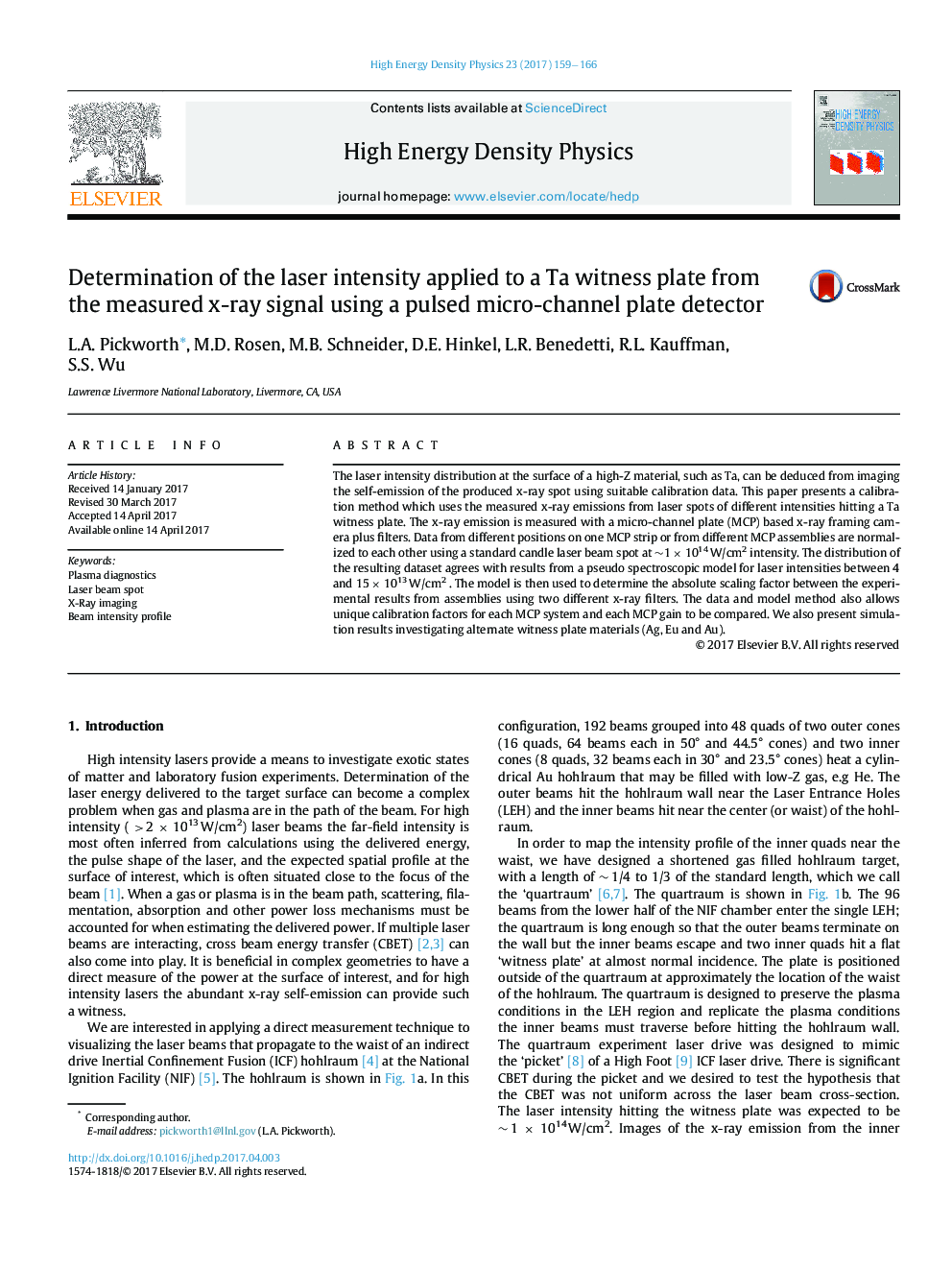| Article ID | Journal | Published Year | Pages | File Type |
|---|---|---|---|---|
| 5486917 | High Energy Density Physics | 2017 | 8 Pages |
Abstract
The laser intensity distribution at the surface of a high-Z material, such as Ta, can be deduced from imaging the self-emission of the produced x-ray spot using suitable calibration data. This paper presents a calibration method which uses the measured x-ray emissions from laser spots of different intensities hitting a Ta witness plate. The x-ray emission is measured with a micro-channel plate (MCP) based x-ray framing camera plus filters. Data from different positions on one MCP strip or from different MCP assemblies are normalized to each other using a standard candle laser beam spot at â¼1 Ã 1014âW/cm2 intensity. The distribution of the resulting dataset agrees with results from a pseudo spectroscopic model for laser intensities between 4 and 15 Ã 1013âW/cm2 . The model is then used to determine the absolute scaling factor between the experimental results from assemblies using two different x-ray filters. The data and model method also allows unique calibration factors for each MCP system and each MCP gain to be compared. We also present simulation results investigating alternate witness plate materials (Ag, Eu and Au).
Keywords
Related Topics
Physical Sciences and Engineering
Physics and Astronomy
Astronomy and Astrophysics
Authors
L.A. Pickworth, M.D. Rosen, M.B. Schneider, D.E. Hinkel, L.R. Benedetti, R.L. Kauffman, S.S. Wu,
